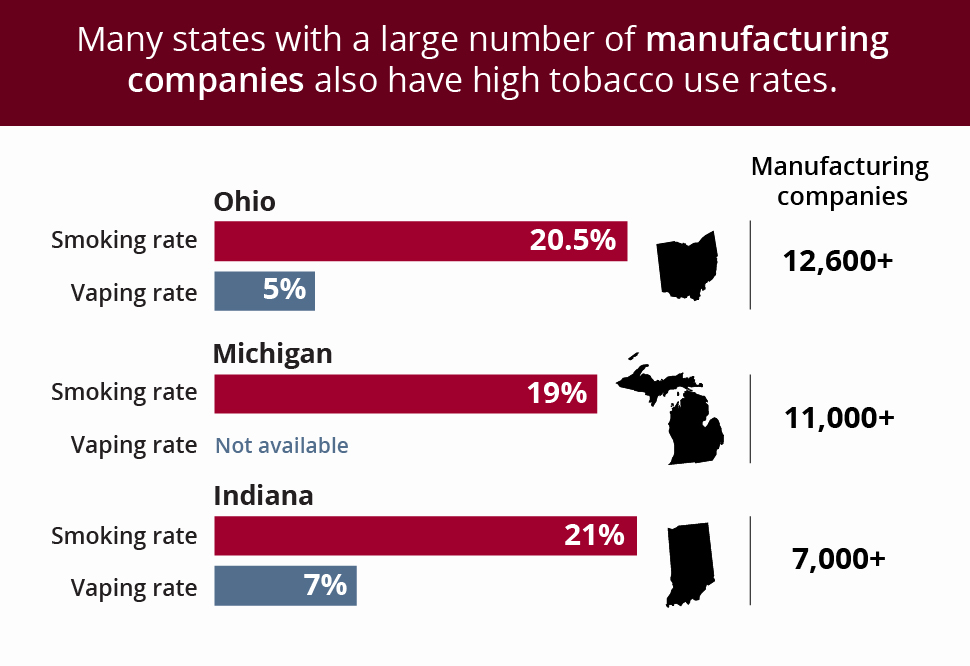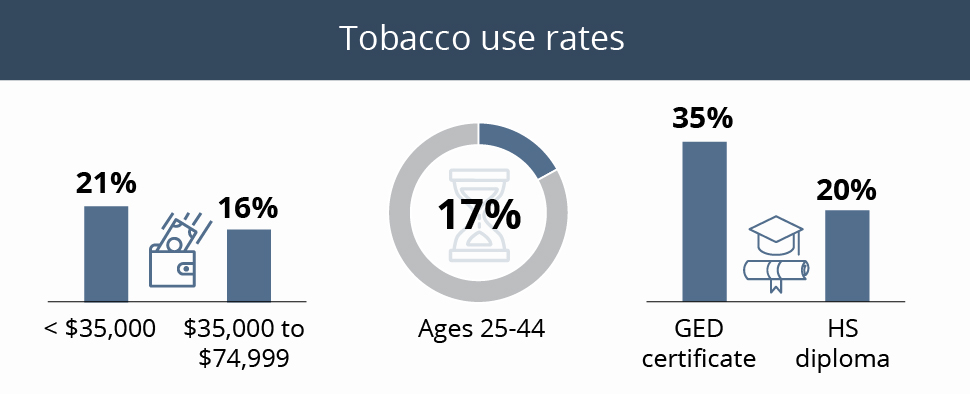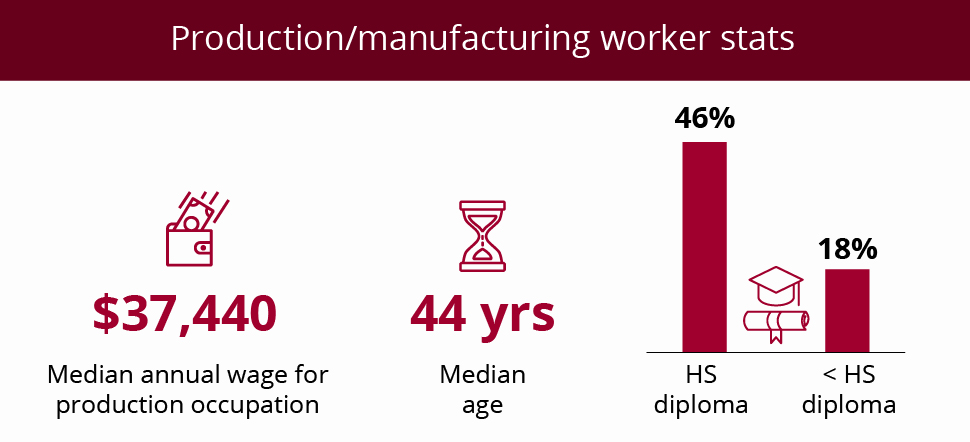For those who work in HR in manufacturing, the current struggle to hire workers (referred to by some as the ‘blue-collar drought’) is nothing new.
Compounding staffing challenges, HR leaders in manufacturing also know they must find engaging ways to keep the workers they DO have healthy and productive. Unfortunately, the high rate of tobacco use among employees in this industry is sabotaging those best intentions.
Like inadequate sleep, physical inactivity, and obesity, tobacco use is a significant factor in reduced work performance. In fact, tobacco use has been found to have a more negative impact on worker productivity than alcohol consumption, family emergencies, age, or education.
Why are tobacco rates among manufacturing workers so high?
The tobacco use rate in manufacturing is 27%, compared to a national tobacco use rate of about 20%. It’s no coincidence that many states with a large number of manufacturing companies also have high tobacco use rates.
Truth Initiative research shows that states such as Michigan, Indiana, and Ohio have higher tobacco use rates than the rest of the U.S., and the consequences on resident health are jarring.
U.S. adults in these states report over 20% more “poor” physical and mental health days than the average American, as well as higher rates of cancer and COPD.
Sources: https://www.nam.org/wp-content/uploads/2019/05/IEAP.USMCA_.FactSheets.Michigan.pdf
https://www.nam.org/wp-content/uploads/2019/05/IEAP.USMCA_.FactSheets.Indiana.pdf
https://www.nam.org/wp-content/uploads/2019/05/IEAP.USMCA_.FactSheets.Ohio_.pdf
https://www.cdc.gov/statesystem/cigaretteuseadult.html
http://statehealthcompare.shadac.org/map/217/percent-of-adults-who-currently-use-ecigarettes-some-days-or-every-day-by-total#a/25/251
Why do manufacturing workers smoke more than employees in other industries?
The demographics of manufacturing workers align with several common characteristics of tobacco users, including lower incomes and education levels.
However, ultimately, manufacturing workers smoke for the same reasons most smokers do. Many often work long hours on shift schedules. Combined with lower pay, this contributes towards stress, which is closely related to smoking.
For manufacturing workers, smoking often offers a way of relieving stress. Taking a cigarette break means getting 10 minutes away from a hectic workplace and having a dopamine-boosting hit of nicotine from smoking. However, this relief is short-lived, and doesn’t address the root cause of the stress.
Motivating manufacturing workers to live tobacco-free
Moving toward a healthier, more productive workforce requires addressing tobacco use and removing barriers to quitting.
Offering an evidence-based digital solution that allows workers to live chat discreetly on their phones with experts at lunch or receive on-demand texts that can knock out cravings, for example, is a great start.
In addition to this, here are 3 crucial strategies our clients also use to motivate manufacturing workers to quit tobacco:
- Build and maintain a wellness culture that emphasizes the importance of living tobacco-free.
Generac is a leading manufacturer of commercial and industrial generators. It has a long-standing tradition of providing tools, resources, and financial incentives to employees through its Healthy Living Program. In 2006, Generac began to provide financial rewards to employees who take an active role in maintaining good health.
In 2018, Generac added more incentives for individuals who committed to be tobacco free. To date, the company’s progressive initiatives have had an impact on trend. See how Generac built its wellness culture to strategically include a quit-tobacco program.
- Pair your quit-tobacco program with an incentive or tobacco surcharge.
Shape Corp., a global, tier-one automotive and industrial component supplier, launched the EX Program to employees in October 2019.
Today, thanks to the right combination of a health-focused culture, a robust tobacco-free policy, a tobacco surcharge, and comprehensive communications, the company’s first-year participation rate is exceeding expectations. Take a deeper look into the keys for Shape Corp.’s success.
- Promote your quit-tobacco program throughout the year, not just during open enrollment.
A Fortune 500 food, snack, and beverage manufacturer partnered with the EX Program to seamlessly launch a digital quit-tobacco program to its employees across the U.S. in 2021. Within 6 months, the company exceeded engagement goals thanks to its consistent cadence of program promotions—as well as a list of other best practices. See the details behind this manufacturer’s approach to successfully addressing tobacco addiction in the workplace.
Interested in learning more about how the EX Program can engage more of your manufacturing employees in quitting tobacco for good? Let’s start a conversation!
See additional reasons to help manufacturing workers quit tobacco in our blogs The Startling Connection Between Smoking and Hearing Loss and 4 Ways Tobacco Use Makes Musculoskeletal Disorders More Costly.







